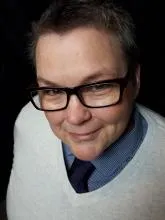Looking to brush up your writing skills or learn a new trick or two? You've come to the right place! Check back weekly for helpful tips and articles that make your writing better.

A lot of people write by the seat of their pants—that is, they rush headlong into writing a book without any sort of physical outline. That’s okay. Everyone’s writing process is different and if throwing yourself into a story without an outline works for you, there’s nothing wrong with that.
But if you’re ready to consider writing your next novel, or if you’re partway through a book and you’ve suddenly realized it’s full of plot holes and twists without resolutions, or you’ve had someone read your book and they’ve come back to say, “I have no idea what this character’s motivation is,” then perhaps it’s time to get serious about plotting.
What is a plot?
A plot is, in the simplest terms, the sequences of events making up a narrative. Plots are generally built around acts. In Western culture, one-act and three-act stories are the most common, though you might also be familiar with five-acts, especially if you've studied any Shakespeare. In Asia, four-act structures, while other regions and cultures have their own preferred formats.
A three-act plot structure will vary depending on your genre and the type of story you want to tell, but basically it looks like this:
Act I:
- The set up (introduce the reader to your main characters and the world they live in)
- The inciting incident (something happens to change the status quo)
- The meet cute (if it is a romance)
- The debate/second thoughts (the main character(s) aren't sure what to do next)
Act II:
- Obstacles
- More obstacles
- Absolute disaster
Act III:
- The Climax (the biggest battle or struggle in which the main characters appear to win)
- Falling action (the main characters catch their breath and/or celebrate their success)
- Processing (the main characters take stock of their experience)
- Last revelations/final conflict (unfinished business is revealed and resolved)
- Dénouement (the main characters go back to their new or changed lives)
If you want to break things down even more, something like this also works:
- Set up – or the character’s current real world.
- The inciting incident that leads the character to a new normal.
- The main character’s goal(s).
- The main character’s primary opponent.
- The obstacles thrown in the character’s way. (What’s stopping your MC from getting what they want?)
- The intense moment leading up to the climax.
- The resolution.
If you aren’t sure how to get started with plotting, consider asking yourself a few questions.
- Who is my main character(s)?
- What do they want? (Note, your character can have internal and external goals. Perhaps they want to save the space station—external goal, and they also want to come to terms with their father’s death—internal goal.)
- What is their life like right now? What’s dissatisfying about it?
- Importantly, what is going to take your main character out of their unsatisfactory, but familiar life and start them on the journey to their new normal? This holds true in a romance or a science fiction, in a mystery or a memoir. Something or someone instigates the beginning of the changes.
Some people think plotting stifles creativity, but I like to think of plotting as being the bones of your novel. Everything else from the characters to the setting to the dialogue is yours—that’s the flesh and blood of your novel. The plot structure simply serves to hold up your novel, so it doesn’t collapse into a gelatinous heap before you even finish writing it.
Why not give it a try today?
⤟ backstory ⤠
September 2025
August 2025
July 2025
May 2025
April 2025
March 2025
February 2025
January 2025
December 2024
November 2024
Copyright © 2025. All rights reserved
StoryBilder and the StoryBilder logo are trademarks of StoryBilder, Ltd.










